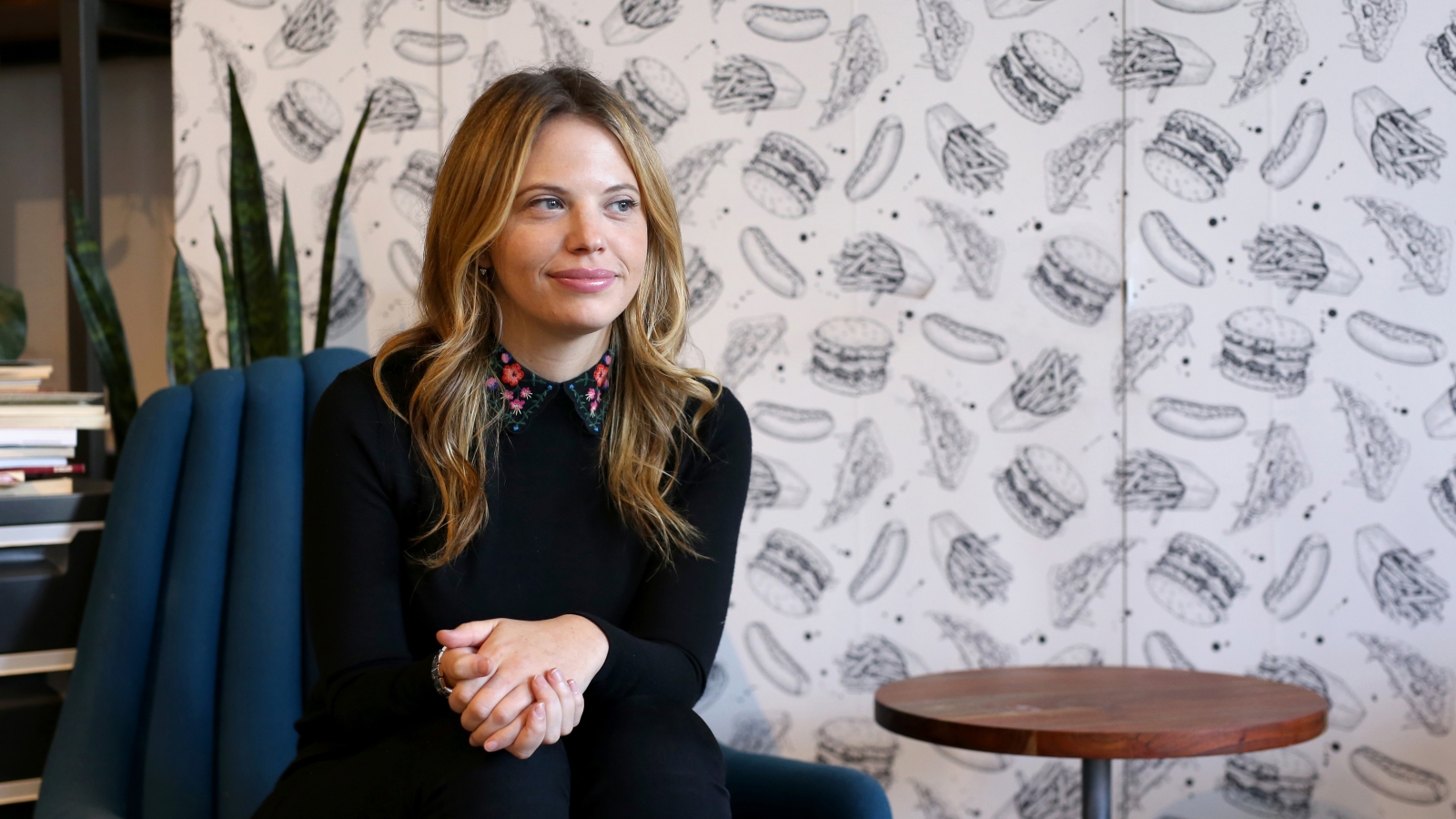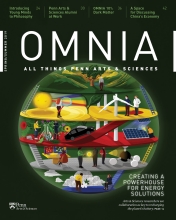Food for Thought
In the mood for tacos? Hillary Reinsberg, C’11, has a recommendation.

Hillary Reinsberg loves maps. When she mentioned this in an interview with the founders of The Infatuation, a restaurant recommendation and review site, they knew she was the right person to bring on as their first employee. That’s because the site is meant for people interested in city spaces as they’re influenced by and respond to food culture.
You can understand a neighborhood from studying a map of its streets, but you can also visit its long-standing pasta spot or new Japanese izakaya to learn something of its culture, history, and growth. Reinsberg, C’11, now Editor-in-Chief of the 70-person, worldwide company, says, “it’s not just about creating guides for how to eat, it’s about understanding cities and the people in them on an almost academic level.”
Reinsberg’s fondest memories of her undergraduate days are shaped by the spaces on Penn’s campus and the energy she felt there. “Walking down Locust Walk and hanging out at the Kelly Writers House meant so much to me,” she says, “and it was never boring. Penn is a good place for high-energy people. There’s a very real-world sense of ‘let’s make this happen.’”
That drive led Reinsberg, an urban studies major and creative writing minor, to accept a position that began the day after graduation. She covered women and politics, which led to an opportunity at BuzzFeed. When she started at The Infatuation in 2014, she had the chance to help build the brand from the ground up. Now, the company’s acquisition of Zagat is a chance for Reinsberg to be part of something at once fresh and iconic. Established in 1979 as collection of diner-driven restaurant reviews, Zagat grew into a recognizable brand whose books were in households across the U.S. “The Infatuation does things differently than Zagat,” Reinsberg explains, “but we share a spirit of considering the needs of the everyday city dweller.”
Here, Reinsberg talks about her path from The Daily Pennsylvanian to The Infatuation and her favorite food cities.
Q: How do urban studies and creative writing complement one another?
I loved my classes. Classes at the Kelly Writers House were really inspiring and I took English courses in which I studied poetry and great novels. It was the type of writing I knew I wouldn’t pursue, but I found it to be one of my most educationally formative experiences.
Urban studies is all about going out into the streets and understanding and unpacking what’s there. That’s definitely the way my mind works and I was drawn to it. Urban studies has a very journalistic spirit.
What I do now combines what I studied so well. I love figuring out what makes each city tick, and helping create great writing to help people navigate those cities.
Q: What kind of writing did you do at Penn?
I discovered 34th Street, the culture magazine of The Daily Pennsylvanian, the summer before my freshman year and read the entire archive. I grew up reading New York Magazine, and 34th Street felt like Penn’s version—smart and funny, written for students. I showed up on the first day, saying, “Can I write something?”
During my time there, we started a blog called Under the Button and I was the first editor. It’s still around, though it has evolved into a very funny satire site. At the time, though, it was a news and culture blog. At my commencement, Amy Gutmann mentioned Under the Button as a news source for students. That moment felt like, “We did it!”
Q: How did you go from blogging about student news to being Editor-in-Chief of a food-focused publication?
It can be hard to be really honest with yourself about exactly what you want to do. When you’re starting out, I think you need to be willing to do anything and try everything. I wrote about so many things and I’m grateful for that experience, but I was afraid to focus on anything too specific early in my career. Gaining the confidence to know what you’re good at is an important lesson.
I learned that I didn’t love being in breaking news, but at the same time, food writing was never my immediate goal. What I realized is that I love building and growing publications. I’ve always enjoyed scrappy environments and have had an entrepreneurial spirit. Even at Penn, I loved building Under the Button from scratch. In the four years I’ve been at The Infatuation, my job has changed and grown.
We have a culture of experimentation and creativity, of trying things and seeing what sticks. As an editor, one of my favorite parts of my job is working with photographers and marketers and engineers and graphic designers and communications people. And a lot of what I do now is work on growing our existing markets and launching new ones. I was in London a lot over the last two years, building an audience and working with writers, and we recently launched in Philadelphia, which was exciting and long overdue.
Q: What are the challenges of working in a quickly growing company?
When we’re expanding into a new city, it takes time to find the right people to come on board. We look for people who don’t have relationships with the restaurant industry but are great writers who want to explore their cities and who can be excited about launching something. We want writers who can write in our irreverent, entertaining style, but also bring their own voices and ideas to the table.
With Zagat, we’re working on reinventing and rebuilding the product. The process is just beginning, but it is one of the most exciting things that I’ve been a part of.
Q: Where should adventurous diners go for an exciting meal?
I may be biased, but New York City is still the best city for a night out. Just make sure to get out of Midtown.
Los Angeles and London are both incredible places to eat right now. In decades past, these two cities didn’t have the best reputations as restaurant cities, but that couldn’t be less true now. In L.A., Korean and Mexican food should be on your agenda. In London, make sure to try some Indian and Turkish restaurants.




